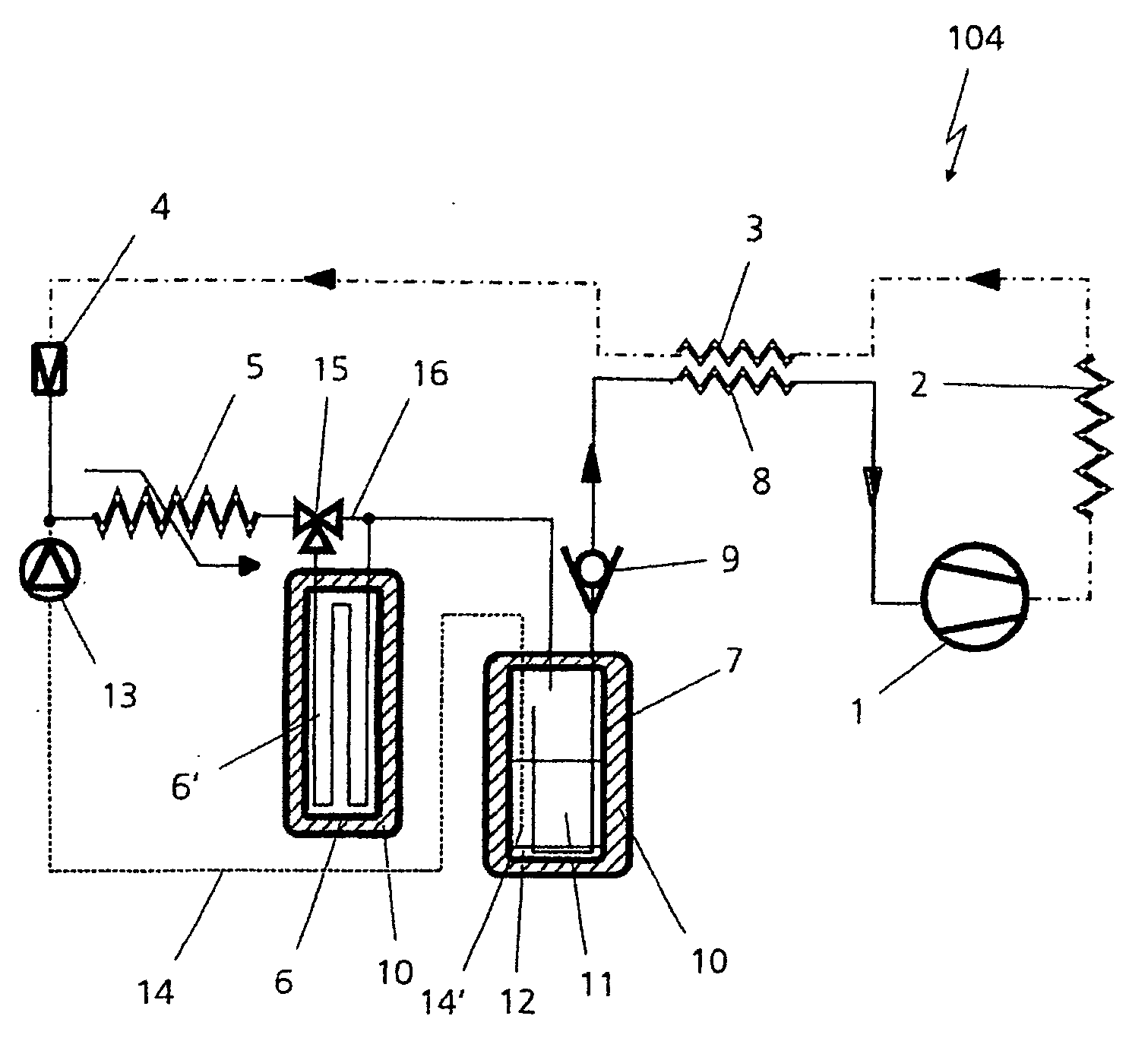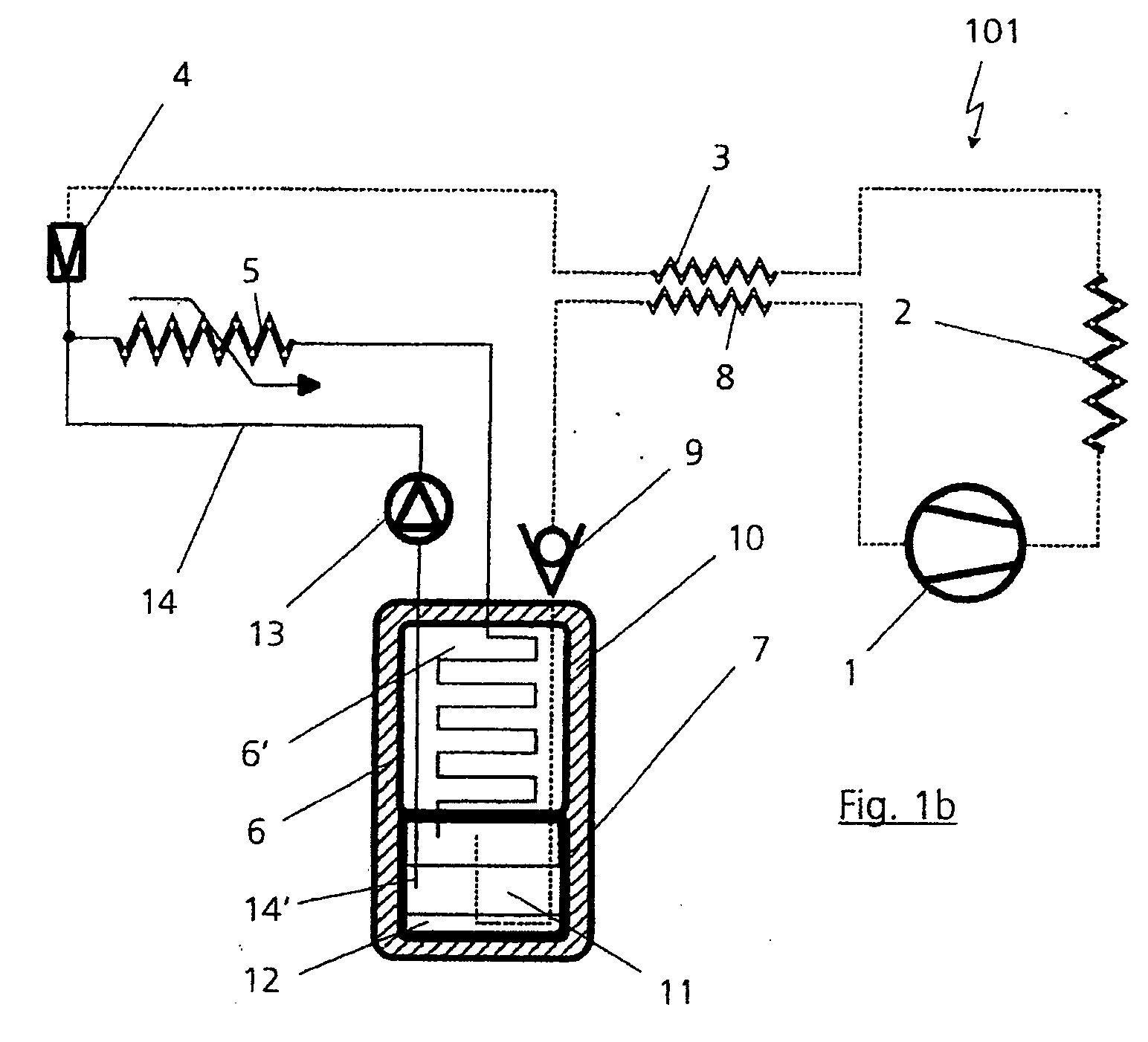Air-conditioning installation, especially for motor vehicles
- Summary
- Abstract
- Description
- Claims
- Application Information
AI Technical Summary
Benefits of technology
Problems solved by technology
Method used
Image
Examples
Embodiment Construction
[0031]FIG. 1a illustrates an air-conditioning installation, which is denoted overall by reference numeral 101, in AC operation. When the compression circuit is running (high-pressure region indicated by dot-dashed lines and suction region indicated by continuous lines), a refrigerant 11 is brought to a high temperature and pressure level in a compressor 1, is cooled in the ambient heat exchanger 2 before being cooled further via an internal heat exchanger 3. It then passes through an expansion valve 4 and is expanded to a lower pressure and temperature level (10° C. to 0° C., depending on the temperature requirements). In an evaporator 5, the refrigerant 11 takes up energy from the useful air which is passed to the interior (passenger compartment—not shown), cools and dries this air and is in the process partially or completely evaporated before it passes to a thermal accumulator 6. In the present exemplary embodiment, the thermal accumulator 6 is located downstream of the evaporato...
PUM
 Login to View More
Login to View More Abstract
Description
Claims
Application Information
 Login to View More
Login to View More - R&D
- Intellectual Property
- Life Sciences
- Materials
- Tech Scout
- Unparalleled Data Quality
- Higher Quality Content
- 60% Fewer Hallucinations
Browse by: Latest US Patents, China's latest patents, Technical Efficacy Thesaurus, Application Domain, Technology Topic, Popular Technical Reports.
© 2025 PatSnap. All rights reserved.Legal|Privacy policy|Modern Slavery Act Transparency Statement|Sitemap|About US| Contact US: help@patsnap.com



